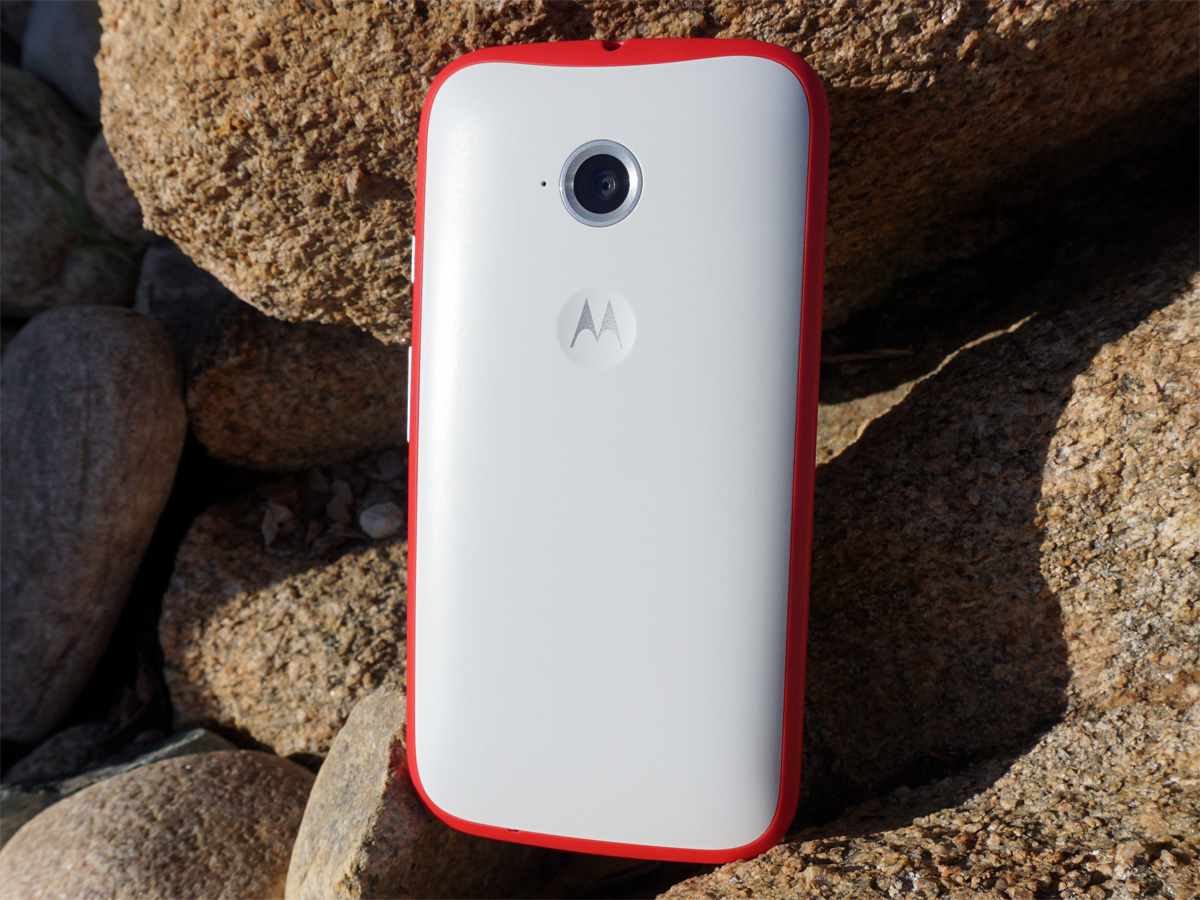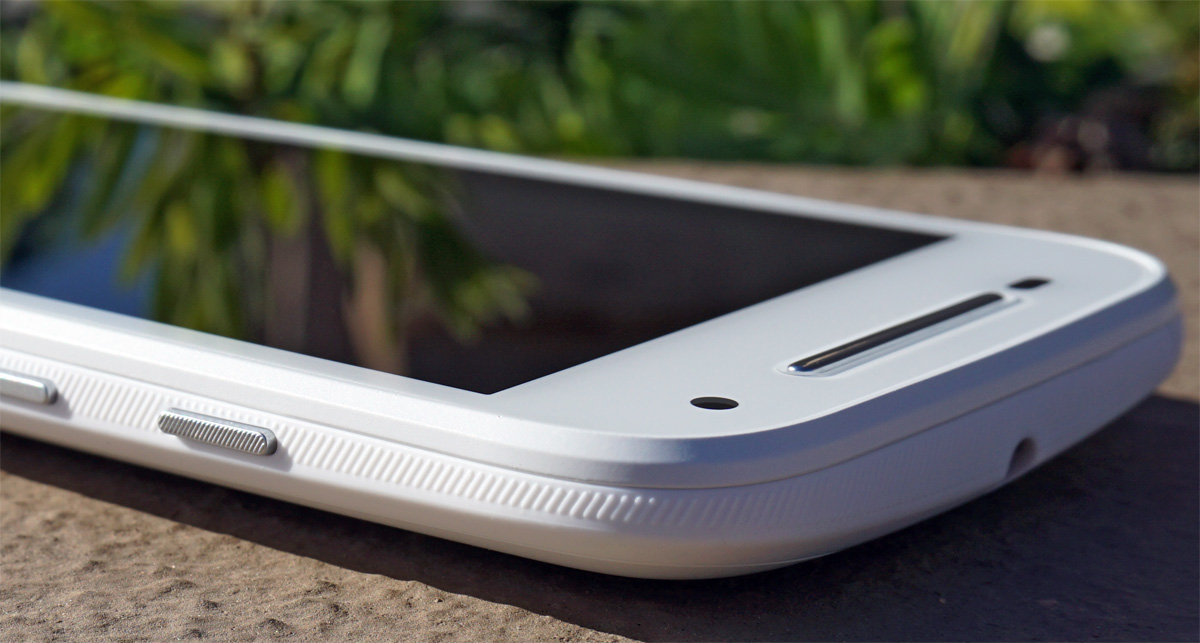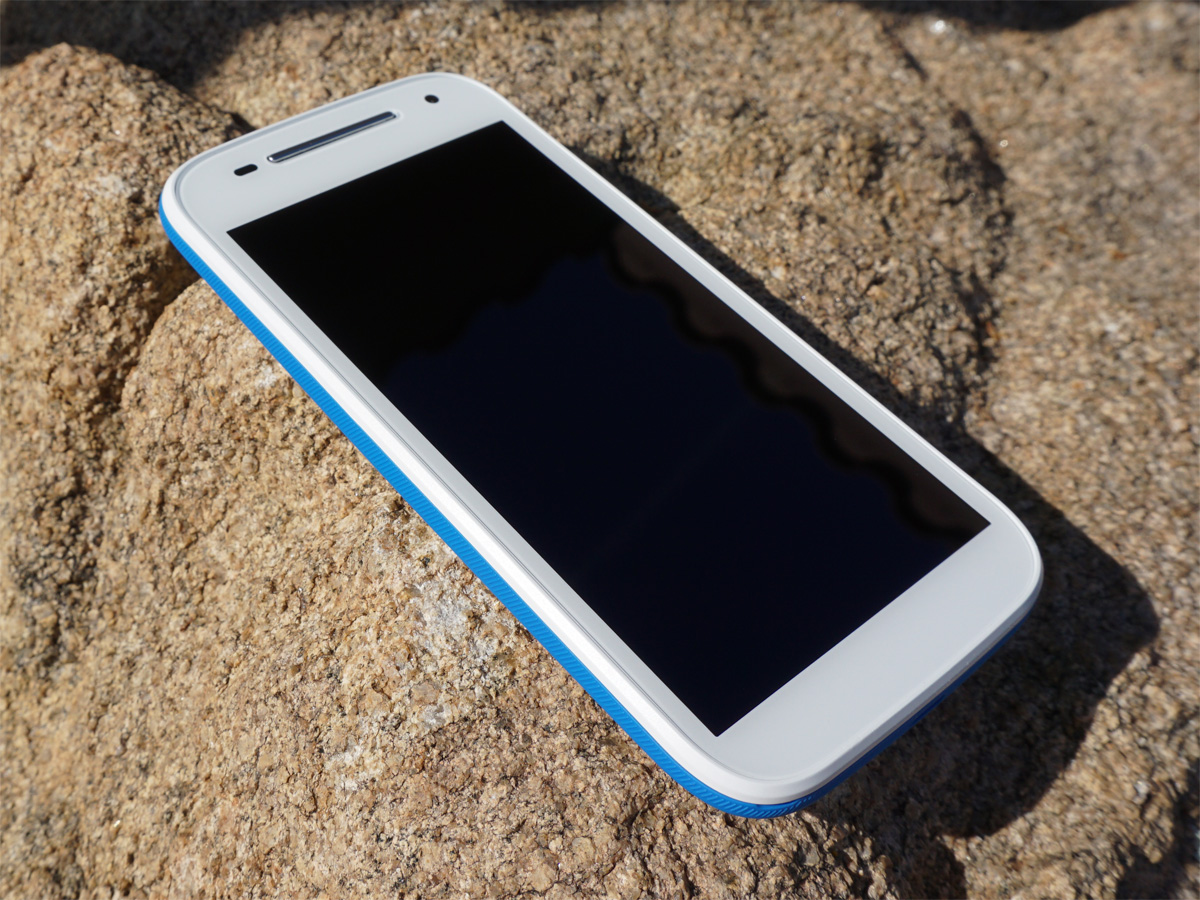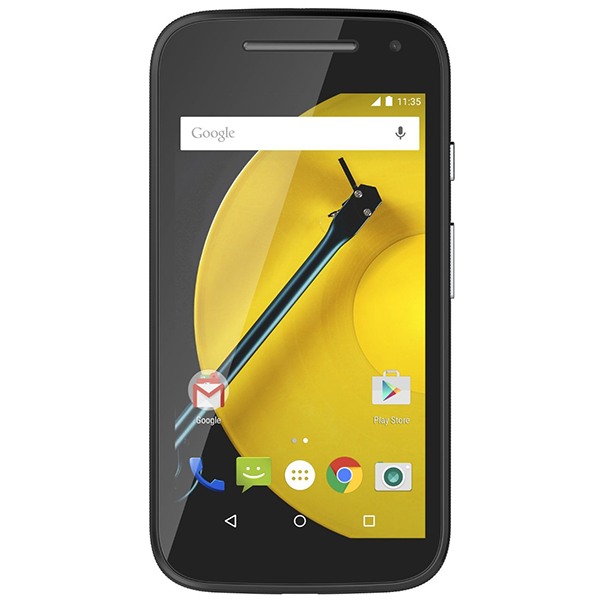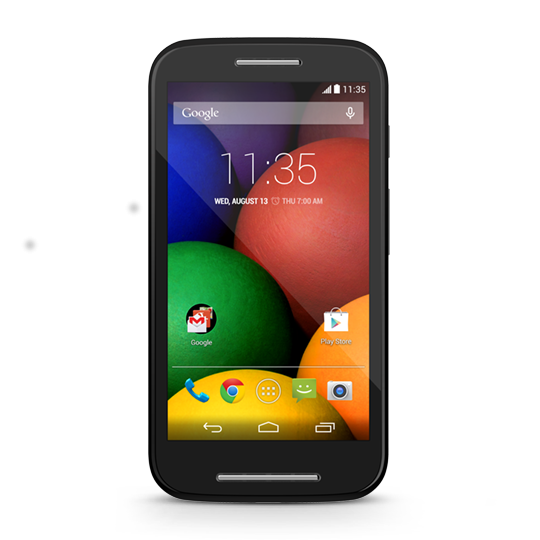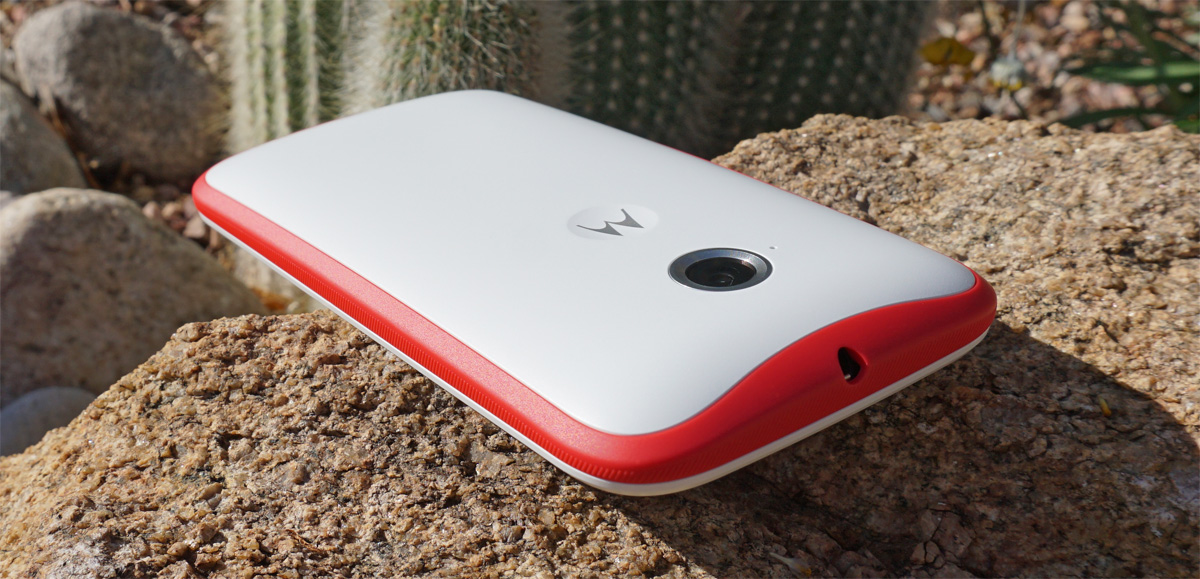Early Verdict
Motorola finds a good balance between features and price with the second generation of the Moto E. It has a long lasting battery and even a color calibrated screen. The Moto E 4G LTE is an inexpensive smartphone that you will actually enjoy using.
Pros
- +
Battery life • Expandable storage • LTE • Performance • Price
Cons
- -
Low light camera quality • No LED flash • Screen bends under pressure
Why you can trust Tom's Hardware
Introduction
Flagships get all the glory and all the latest technology: blazing fast 64-bit octa-core processors; large, retina displays; wireless charging; high-resolution cameras with OIS and swift phase detection autofocus. While these premium phones may captivate our attention, not everyone needs their cutting-edge features or their extravagant prices. Fortunately, technology’s rapid pace of development has pushed once fanciful features into lower-cost phones.
Two years ago, Motorola launched the well-received, mid-range Moto G smartphone that cost only $179 for the 8GB version and $199 for the 16GB version. It had a quad-core Cortex-A7 processor, a 4.5-inch HD (1280x720) screen, and 1GB of RAM. These specs were seen in devices that cost almost double at the time such as the HTC One Mini or the Galaxy S4 Mini. With similar specs for half the price, the Moto G offered great value to customers looking for a low-priced, mid-range smartphone.
Then, about six months later, Motorola launched the even cheaper Moto E. Aimed at the 3G only market, it cost just $129 and came with a dual-core Cortex-A7 processor, a 4.3-inch qHD (960x540) screen, and also 1GB of RAM.
However, this device did not deliver the same value as the Moto G. It had a significantly worse camera with no flash, which is important for many customers in emerging markets, and no front-facing camera either. Motorola cut too many corners to create a device that was “only” $50 cheaper, which is why most people still recommended the Moto G over the Moto E. The Moto G was a much better package overall.
For the second generation of the Moto E, Motorola is offering two different versions that get several significant upgrades. There’s still a 3G only version for $120, but now there’s a 4G LTE version too for $150. Both models include 8GB of internal storage (twice as much as the original Moto E) and support microSD (up to 32GB). Battery size has also increased substantially from 1980mAh to 2390mAh, a 20% improvement. The new Moto E also adds a front-facing camera—a serious omission on the first generation—and the rear camera gets autofocus. Each version comes in either black or white.
The display has grown compared to the last generation Moto E, increasing from 4.3-inch to 4.5-inch. However, it keeps the same 960x540 resolution (245 PPI). Considering that the competing Lumia 635 comes with an even lower 854x480 resolution, the Moto E’s qHD resolution seems adequate for this price range.
Motorola Moto E Tech Specs
The second generation Moto E 3G still uses a Snapdragon 200 SoC like that found in the original version; however, it moves from a dual-core to quad-core Cortex-A7 CPU.
Get Tom's Hardware's best news and in-depth reviews, straight to your inbox.
The Moto E 4G LTE, which we’ll be focusing on in this review, uses Qualcomm’s latest low-end SoC, the Snapdragon 410, which is the successor to the Snapdragon 400 found inside both generations of the Moto G. It has a quad-core 64-bit Cortex-A53 CPU and an Adreno 306 GPU.
This puts a bit of a kink in Motorola’s product lineup, since the Moto E 4G LTE should offer better system performance than the Moto G (2nd gen). Add in LTE support and it starts looking like a great value compared to the 3G only Moto G that costs $30 more. But what the Moto G lacks in system and wireless performance it makes up for with a larger, higher-resolution display, stereo front-facing speakers, and better cameras front and rear (with LED flash). The Moto G really needs LTE support to make it the clear mid-range option.
These jumbled system specs are a result of the staggered six-month release schedule, which gives the Moto E access to newer hardware. With LTE support becoming ubiquitous, we suspect this idiosyncrasy will disappear in Motorola’s third generation products.
Cellular
| Model Number | Moto E 4G LTEXT1527 | Moto E 3G (US)XT1511 | Moto E 3G (Global)XT1505 |
|---|---|---|---|
| LTE | 2/4/5/7/12/17 | - | - |
| GSM | 850/900/1800/1900 MHz | 850/900/1800/1900 MHz | 850/900/1800/1900 MHz |
| CDMA2000 | - | - | - |
| WCDMA | 2/4/5 | 2/4/5 | 1/2/5/8 |
The Snapdragon 410 SoC in the Moto E 4G LTE version includes Qualcomm’s third-generation Category 4 LTE modem on package. Functionally equivalent to the Qualcomm MDM9225 baseband processor, it offers 150 Mb/s down and 50 Mb/s up with carrier aggregation. It also supports HSPA+ Release 10 for 84 Mb/s down using dual-carrier HSDPA, along with most major radio modes, including GSM/EDGE, UMTS (WCDMA, TD-SCDMA), LTE (LTE-FDD, LTE-TDD), CDMA1x, and EV-DO Rev. B. It does not support CDMA2000, however.
We were unable to confirm this, but it’s likely that the primary transceiver is paired with the WFR1620 receive-only transceiver, since this baseband generation can’t support full Category 4 LTE speeds on its own.
The two 3G variants utilize the Qualcomm baseband integrated into the Snapdragon 200 SoC, delivering 3G speeds up to 42 Mbps. It supports GSM/EDGE, WCDMA, CDMA1x, and EV-DO Rev. A.
Lucian Armasu is a Contributing Writer for Tom's Hardware US. He covers software news and the issues surrounding privacy and security.
-
emad_ramlawi Lenovo k30-W for the winReply
all the above +
HD ready resolution 720p
internal storage 16GB
the only con, is there OS, which is good, but not really vanilla android -
atljsf i bought one and had to return it, it restarts while charging and motorola at this moment hasn't solved the problem, a shame because it is a nice fast phoneReply -
tekelymailcom The only international variant mentioned is the XT1505 but there are more. I found very interesting the XT1523 which has 16GB, dual sim and digital TV reciever.Reply -
HideOut There might be an error in the speaker/sound part above. "Plugging in a set of good headphones provides a similar listening experience. Relative to the iPhone 6, bass has less punch and the Moto E lacks clarity; the signal-to-noise ratio seems higher." The S/N ratio on the Moto E should be LOWER, not higher if it sounds like its lacking clarity.Reply -
HideOut There might be an error in the speaker/sound part above. "Plugging in a set of good headphones provides a similar listening experience. Relative to the iPhone 6, bass has less punch and the Moto E lacks clarity; the signal-to-noise ratio seems higher." The S/N ratio on the Moto E should be LOWER, not higher if it sounds like its lacking clarity.Reply -
MobileEditor ReplyThe S/N ratio on the Moto E should be LOWER, not higher if it sounds like its lacking clarity.
Good point. I must have been thinking of THD, which is expressed as a percent. I've made the necessary correction.
- Matt Humrick, Mobile Editor, Tom's Hardware -
Dr3amCast I also purchased this phone and experience the restart while charging issue. Also, the performance is on par with a very, very basic Lumia 510 I had the misfortunate of having to use for a short time. The phone chugs while multi-tasking. And I mean by just hitting the home screen instead of closing out of apps. And even that takes an inordinate amount of time. I'm talking a noticeable 3-4 seconds after you hit home: your background wallpaper shows up, but no icons or app try icon, then another second or 2 later the icons show up. It's performance is dreadful. As well is its 1GB of memory. If I'm in the car I use bluetooth and Google Play Music / Google Maps. If I begin navigating to a destination and begin playing music Maps will close. I'm assuming due to lack of sufficient RAM. If I'm at a stop light and open snapchat, Google Play Music, Maps or Waze will close if I view a Snap. It's really rather frustrating the more you use the device. And I don't have many apps on here at all. Essentially just FB, Twitter, Snapchat, Waze, WatchESPN, HBOGo. That's all. It's frustrating seeing reviews like these on this phone that don't actually put it through its paces for a decent amount of time.Reply -
MobileEditor ReplyI also purchased this phone and experience the restart while charging issue. Also, the performance is on par with a very, very basic Lumia 510 I had the misfortunate of having to use for a short time. The phone chugs while multi-tasking.
I'm sorry you had a poor experience, but thanks for taking the time to add your story. This is why we included the HTC Desire Eye in our performance evaluation, so our readers could see the performance delta between some lower-cost devices and last year's flagships running Snapdragon 801 SoCs, which are now considered mid-tier.
Our unit did not experience the restart while charging issue, and while this comes as no solace to you, the Moto E handled its 1GB of RAM better than the Lumia 830 did during our testing and evaluation.
- Matt Humrick, Mobile Editor, Tom's Hardware -
quadrider21 I've experianced BT connectivity problems with both the Moto G and this new Moto E when connected to various cars. I'd be wary purchasing these phones if you rely on BT connectivity in your cars.Reply
